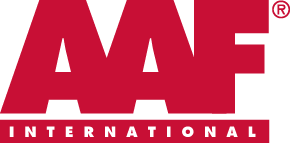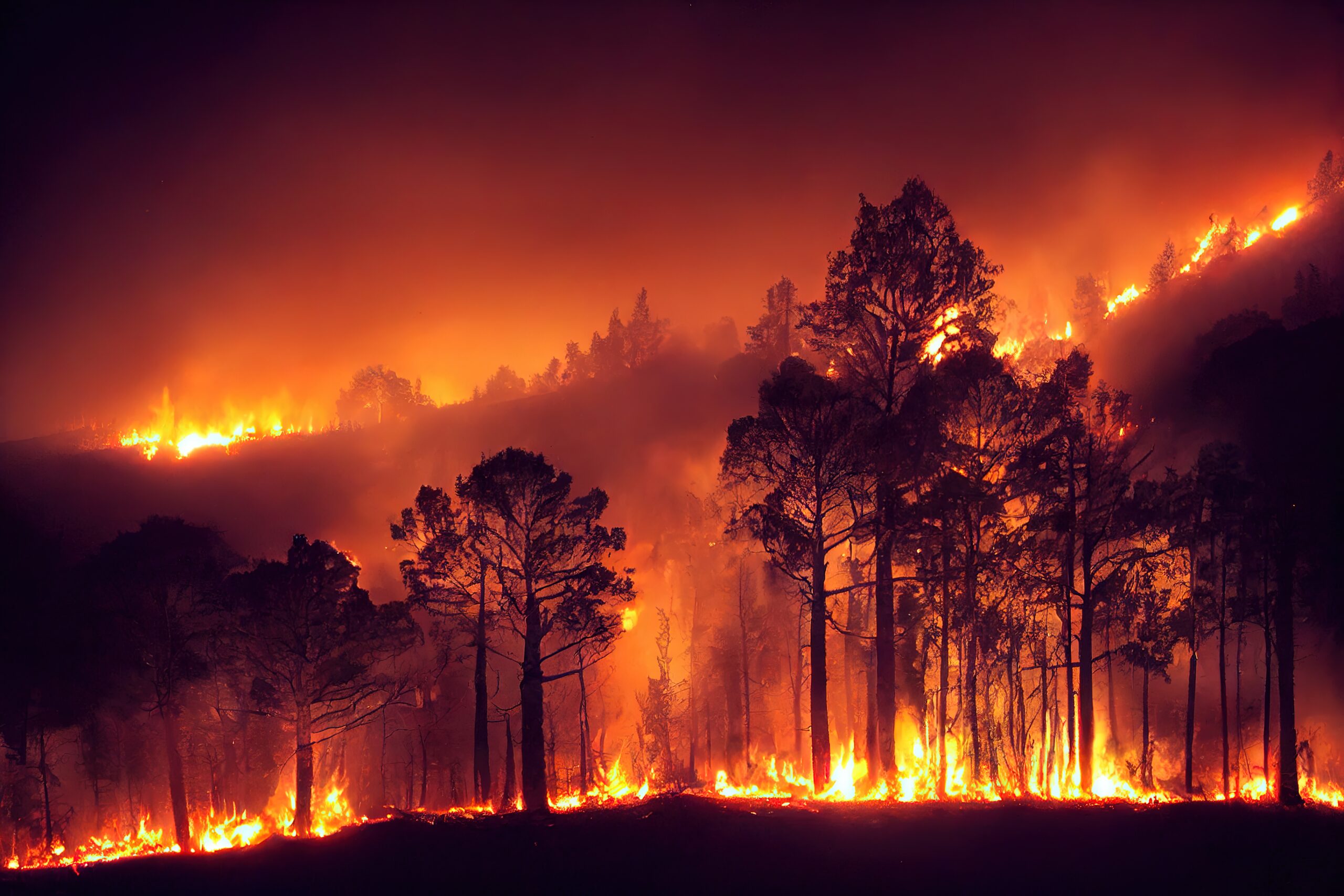Nearly the entire U.S. is threatened by wildfires, directly or indirectly. As scary as it is to be in the path of a raging fire, smoke plumes release gases and particulates that carry hundreds and even thousands of miles on the wind.
The World Health Organization (WHO) considers the amounts of fine particulate matter released by these fires hazardous. At these concentrations, the particulates pose significant risks to the lungs, the brain’s ability to function normally, and the nervous system.
The Environmental Protection Agency (EPA) developed its air quality index to provide guidance to help people, particularly those who are unusually sensitive, take proper precautions. The air quality index (AQI) takes into account particulate matter and gases such as ozone. Wildfires typically cause outdoor air quality levels that are unhealthy or worse on the AQI scale. Indoor air quality (IAQ) can be even worse than outdoor air without the right filters.
How Air Filtration Can Help
If you are located near a wildfire:
- Consider replacing existing prefilters with a prefilter that includes activated carbon to reduce smoke odors, ozone, and other hazardous pollutants found in smoke.
- Perform more frequent filter checks/changeouts to avoid filter breaches and HVAC equipment wear due to higher-than-normal dust loading.
If your area is prone to wildfires:
- Choose a high-efficiency filter rated at least MERV 13 to minimize fine particles, which wildfires create in massive quantities. Make sure that your system can accommodate the reduced airflow associated with greater particle efficiency.
- Choose a filter with high dust-holding capacity to reduce the number of changeouts required and decrease the likelihood of a filter breach, since elevated particle counts cause filters to load with dust more quickly.
The Case for MERV 13
The fine particulates from wildfire smoke of greatest concern are those in the PM2.5 range. Particles in this range are 2.5 microns in diameter or smaller, roughly 30X smaller than the width of a human hair. Particles of this size stay suspended in air for long periods of time, can travel long distances, and can penetrate deep into the lungs, causing serious health problems.
- For a filter to be rated at MERV 13, it must capture at least 85% of particles 1-3 microns in diameter and 50% of sub-micron particles, offering a significant reduction of particles in the PM2.5 range.
- By comparison, filters rated at MERV 8 are only required to capture 20% of 1-3-micron particles and have no requirement for the capture of submicron particles. As a result, these filters offer little to no protection against PM2.5.
- Failing to upgrade from a MERV 8 to MERV 13 filter means that well over 80% of PM 2.5 particles pass through the filter and into occupied spaces. MERV 13 filters, by comparison, block 75-80% of PM2.5 particles.
Nearly the entire U.S. is threatened by wildfires, directly or indirectly. As scary as it is to be in the path of a raging fire, smoke plumes release gases and particulates that carry hundreds and even thousands of miles on the wind.
The World Health Organization (WHO) considers the amounts of fine particulate matter released by these fires hazardous. At these concentrations, the particulates pose significant risks to the lungs, the brain’s ability to function normally, and the nervous system.
The Environmental Protection Agency (EPA) developed its air quality index to provide guidance to help people, particularly those who are unusually sensitive, take proper precautions. The air quality index (AQI) considers particulate matter and gases such as ozone. Wildfires typically cause outdoor air quality levels that are unhealthy or worse on the AQI scale. Indoor air quality (IAQ) can be even worse than outdoor air without the right filters.
How Air Filtration Can Help
If you are located near a wildfire:
- Consider replacing existing prefilters with a prefilter that includes activated carbon to reduce smoke odors, ozone, and other hazardous pollutants found in smoke.
- Perform more frequent filter checks/changeouts to avoid filter breaches and HVAC equipment wear due to higher-than-normal dust loading.
- Choose a high-efficiency filter rated at least MERV 13 to minimize fine particles, which wildfires create in massive quantities. Make sure that your system can accommodate the reduced airflow associated with greater particle efficiency.
- Choose a filter with high dust-holding capacity to reduce the number of changeouts required and decrease the likelihood of a filter breach, since elevated particle counts cause filters to load with dust more quickly. The Case for MERV 13The fine particulates from wildfire smoke of greatest concern are those in the PM2.5 range. Particles in this range are 2.5 microns in diameter or smaller, roughly 30X smaller than the width of a human hair. Particles of this size stay suspended in air for long periods of time, can travel long distances, and can penetrate deep into the lungs, causing serious health problems.
- For a filter to be rated at MERV 13, it must capture at least 85% of particles 1-3 microns in diameter and 50% of sub-micron particles, offering a significant reduction of particles in the PM2.5 range.
- By comparison, filters rated at MERV 8 are only required to capture 20% of 1-3-micron particles and have no requirement for the capture of submicron particles. As a result, these filters offer little to no protection against PM2.5.
- Failing to upgrade from a MERV 8 to MERV 13 filter means that well over 80% of PM 2.5 particles pass through the filter and into occupied spaces. MERV 13 filters, by comparison, block 75-80% of PM2.5 particles. When MERV 13 Filtration Isn’t Enough
- Because wildfires commonly produce PM2.5 concentrations from 300-500 micrograms per cubic meter, blocking 80% of these particles may not be sufficient. The resulting indoor air is far safer at 60-100g/m3, but it remains above the 50g/m3 “safe” range recommended by the EPA.Facility managers have largely selected one of two options to address this issue:
- Upgrading filter efficiency beyond MERV 13.
- Adding indoor air purification systems.Portable air purifiers, such as the AAF’s AstroPureTM unit, can mitigate the risks posed by wildfire smoke, and they can also help capture airborne infectious agents. The AstroPure purification system combines a high-efficiency air filter with a HEPA filter to extract harmful particles from occupied spaces, removing at least 99.99% of submicron particles to ensure safe indoor air quality.Identify the Right Solution for Your BuildingThe clean air experts at AAF help you determine the best air filtration solution for wildfire smoke for your facilities. The process starts with a complimentary air filtration audit, which offers a host of benefits, including the elimination of potential leak paths. Free of charge, our technicians provide:
- Documentation of the current state of the air filtration system.
- Guidance as to how to optimize clean air spending in terms of materials, labor, and energy costs.
- Performance data as a benchmark to compare against past or future data.Further, AAF offers VisionAirTM IEQ software. This unique technology allows the user to visualize the impact on indoor air quality when air filtration efficiency is increased and/or a portable air purifier is added. With this invaluable information, facility managers can reduce the threat of elevated particulate levels.

